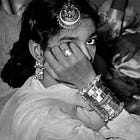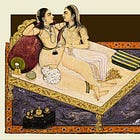Welcome to Brown History. If you’re enjoying this labor of love, please do consider becoming a paid subscriber. Your contribution would help pay the writers and illustrators and support this weekly publication. If you like to submit a writing piece, please send me a pitch by email at brownhistory1947@gmail.com.
Don’t forget to check out our SHOP and our Podcast.

Recommended Reads:
How the British Attempted to Erase the Hijra
The Hijra community are the oldest gender non-conforming community in South Asia. Gender non-conformity in the Indian subcontinent can be dated back over 2800 years. Some believe that these ancient gender non-conforming groups may be what is known as Hijras today. In India and Pakistan today, they are a legally recognised third gender, an alternative to male and female. They are usually assigned male at birth, although sometimes they are born intersex. The process of becoming a Hijra has remained the same for hundreds of years. During the Raj and to the present day, it is believed that many sacrifice their genitals to Hindu goddess Bahuchara Mata, usually through castration, to become a Hijra. This sacrifice makes the Hijra infertile, but it is believed by many in South Asia that this sacrifice gives them the power to bless people with fertility, which has historically made this community spiritually important in the subcontinent.
Under British rule the Hijra community saw a considerable amount of change. For thousands of years, gender non-conforming people in the Indian subcontinent were an accepted part of social structures. The Islamic Mughal Empire, who ruled India before the British, respected the Hijra community, often giving them important roles as bodyguards in royal courts. The arrival of the British in the subcontinent saw the lives of the Hijra community change drastically.





